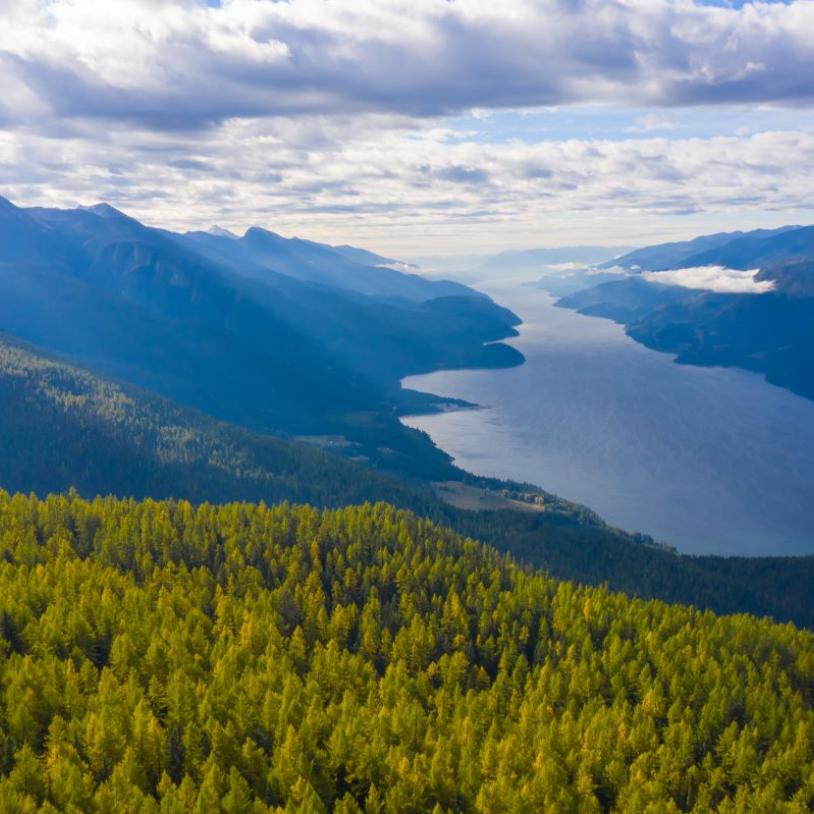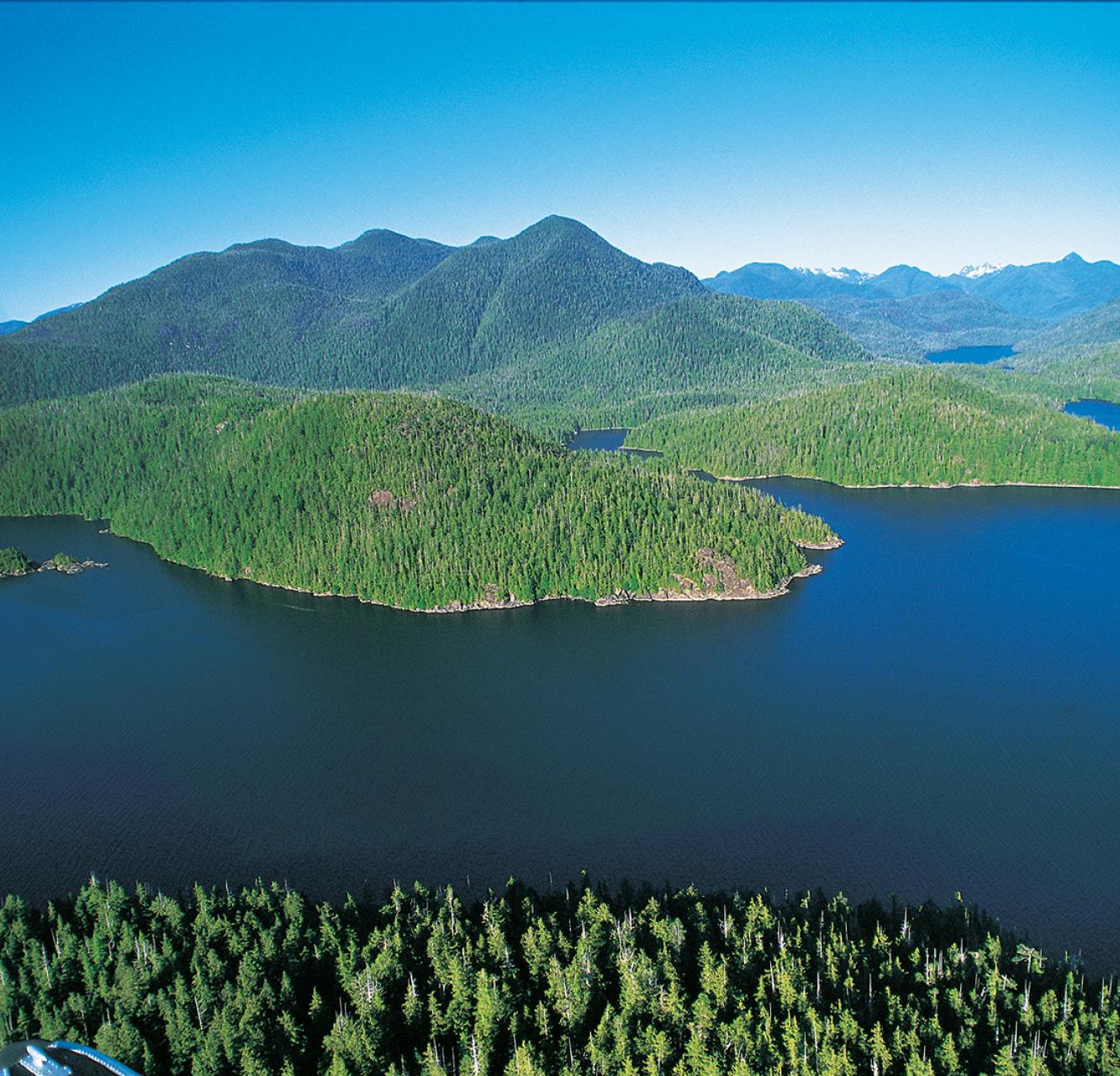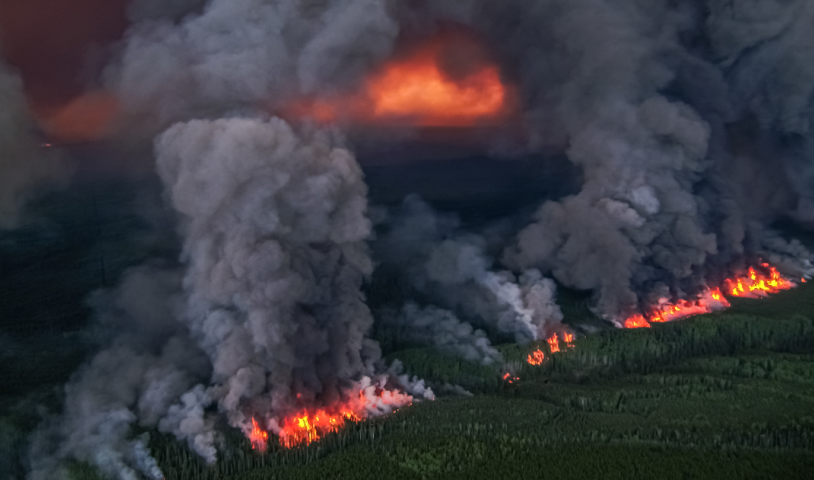Clayoquot Sound's temperate forests among highest carbon storage areas in North America
Wednesday, December 1, 2010
Local activist group worries logging Flores Island will push climate change further while another study suggests that using wood products would tackle it as well
To harvest, or not to harvest: that is the forestry question.
In late November a new book called Temperate and Boreal Rainforests of the World: Ecology and Conservation was released and in it international scientists urged Canada to protect its northern rainforests as climate change insurance.
"British Columbia contains approximately 25 per cent of the planet's remaining primary temperate rainforest," Paul Paquet, Raincoast Conservation Foundation's senior scientist and one co-author of the book, said. "Given the diminished and impoverished state of temperate rainforest globally, the importance of protecting what remains in B.C. must be elevated. Only limited protection now exists for B.C.'s coastal rainforest, with most of the irreplaceable highly productive and bio-diverse old growth already having been liquidated. Consequently, from an ecological perspective, a substantial portion of what remains needs full protection to compensate for what has been permanently damaged."
Canada has more than 20 million hectares of temperate and boreal rainforests; and Clayoquot Sound (303,813 hectares) is one of the sites of the Pacific North American forests storing more tones of carbon per hectare than Canada's east coast, according to the study.
The study states temperate (and boreal) rainforests should be protected from development because they play a pivotal role in cleaning the air, purifying water and providing wildlife habitat, and play a vital role to the planet's climate regulation system.
The rainforests are essential to carbon storage and when they are cut down the stored carbon is released as carbon dioxide to the atmosphere and contributes to climate change, according to the book.
Hence the scientists' appeal to the Canadian federal government to protect northern rainforests from deforestation, which comes at a time when the Conference of the Parties to the United Nation's Framework Convention on Climate Change (Canada is a member) is attending the 16th conference on climate change in Mexico from Nov. 29 to Dec. 10.
The United Nations has also declared 2011 International Year of Forests.
However, a recently released European study found that structures utilizing wood is better for the environment.
In the book Tackle Climate Change: Use Wood, researchers found wood offers a way to reduce carbon dioxide emissions. A similar book by the same title was released in September 2009 by the BC Forestry Climate Change Working Group and the California Forestry Association.
The European book, identifies that at least 60 per cent of climate change can be attributed to carbon dioxide emissions resulting from human society -- mostly the burning of fossil fuels contributing six billion tons of carbon emissions each year.
Although the study shares similar findings of carbon storage in forests, it goes on to state, "The energy used in construction, including manufacturing, transporting and erecting buildings, is significantly lower for wood-based products and systems than for other building materials."
In the joint Canadian and Californian study from 2009, it states that a typical 2,500 square metre wood-frame home has 30 metric tons of carbon stored in its structure, which is the equivalent of an average vehicle driving for five years.
"Wood products store carbon while also substituting for materials that require large amounts of fossil fuels to produce," the 2009 book states.
Despite carbon cycling being a complex issue, one forester suggested that Europe is ahead of the rest in recognizing the positive environmental impact of using wood.
Derek Drake, Iisaak Forest Resources Ltd. general manager, said wood is a green product made in "nature's own solar-powered factory."
"As long as forests are well cared for and regenerated they will keep consuming carbon and creating wood, as they have always done," he told the Westerly in an email interview. "This is the reason wood is considered carbon neutral as a raw material. We really should use wood wherever we can to displace use of other building products like concrete and steel that are considered far less environmentally friendly."
Drake also said the majority of the forest landbase Iisaak manages will remain uncut, "and where cutting is done we retain a significant portion of the stand and surrounding areas to protect wildlife habitat, cultural values, biodiversity, viewscapes and other values."
"So our approach is really a strong focus on preservation of undisturbed forest, carefully selected to protect ecosystem integrity, (the watershed plan reserve networks), combined with conservative application of harvesting in areas outside of the reserve networks," he explained.
Drake said the Flores Watershed Plan is available for harvest applications that may be developed after consultation with the Ahousaht First Nation.
However, the Friends of Clayoquot Sound (FOCS) remain concerned with logging a forest that's identified as being integral to preserving the environment and fighting climate change.
"The Flores forest is among the most significant in Clayoquot Sound, with timber volumes up to 1,800 cubic metres per hectare, three times the Clayoquot average," Maryjka Mychajlowycz, of FOCS, said. "Such amazingly productive forest is found only in the remaining intact areas of Clayoquot Sound, and in a few remnant stands in the logged-out valley bottoms of Tofino, Tranquill, Cypre and Atleo Rivers."
Mychajlowycz said it was ironic that the scientists making the call to protect the world's temperate rainforests came at a time when Iisaak is surveying roads and cutblocks in intact valleys on the east side of Flores Island.
"It would be an ecological travesty to log the intact rainforest of Flores Island."
For more information about the book, Temperate and Boreal Rainforests of the World: Ecology and Conservation, visit www.geosinstitute.org. For a link to the Canadian and Californian book Tackle Climate Change - Use Wood visit www.bcclimatechange.org.
To learn more about Iisaak and its forestry practices visit www.iisaak.com. To read more about the FOCS organization check out its website at www.focs.ca.





